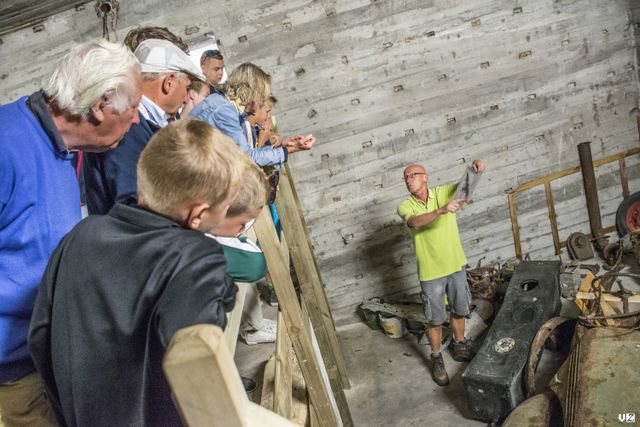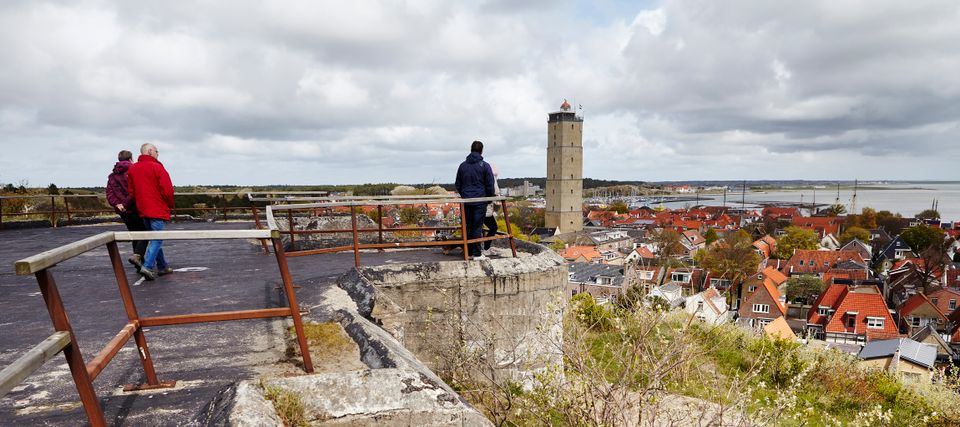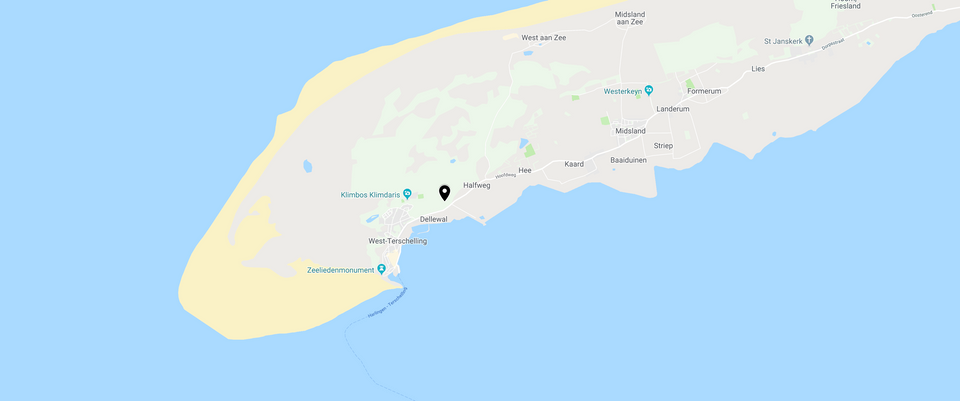Visit Terschelling
The Tigerstelling on Terschelling was a large bunker complex and part of the Atlantic Wall in the Wadden area. Command bunker ‘Bertha’ was the heart from which the German air force coordinated the battles in the air space above Terschelling. Approximately 40 specialised military men lived and worked in the enormous, 2-storey bunker. The Tigerstelling was responsible for shooting down almost 200 allied aircraft. Part of the fortification is now a museum.
Stichting Bunkerbehoud Terschelling is responsible for the former German radar installation, Tiger. This is one of the few fortifications in the Netherlands that has remained largely intact. The 7-hectare complex consists of more than 100 bunkers, where around 200 German soldiers lived and worked during WWII. Due to its impressive size, Bertha is unique in the Netherlands.
You can book a guided tour by visiting the fortification or the exposition at the visitor centre.

The construction of several impressive fortifications was characteristic of the occupation years on Terschelling, just as on the other Wadden islands. German building unit Organisation Todt was responsible for construction, using local contractors. The male population of Terschelling was, reluctantly, closely involved in their construction. At first, they worked as volunteers. During a later phase of the occupation, when the atmosphere had become grimmer, they were forced to carry out the works.
The Germans also recruited workers from the mainland for the construction of the Atlantic Wall. In 1942, more than 600 non-islanders were involved in the heavy work. The mandatory work on the bunkers did have one advantage for the men of Terschelling: they were able to avoid the Arbeitseinsatz outside the island.
Just as everywhere, parts of the Atlantic Wall on Terschelling have also disappeared. The main complex, the Tigerstelling, an impressive bunker complex on the Delleweg, remains largely intact. Parts of other fortifications also survived and there is even one entire underground fortification remaining.
The Tigerstelling
The main reason the Tigerstelling remained intact is because its buildings spent most of the post-war years buried in the sand. During the war, the well-camouflaged fortification formed the heart of all the radar installations on Terschelling. The complex had a total of 102 buildings; crew quarters, horse stables, mess halls, artillery batteries and radar posts. The central bunker that housed the ‘nerve centre’, had two storeys. The walls and roof were made from two-metre thick concrete. The Tigerstelling's most important bunkers have been excavated and are now open to the public.
The Tigerstelling was the centre of an ingenious network of innovative radar installations that could detect allied aircraft from long distances.
Stelling West-Battery
Stelling West-Battery at Hoge Duin, west of West-Terschelling, still houses the remains of a Wasserman radar installation. The location offers stunning views of the island. You immediately understand why the Germans chose this spot to build a radar installation. During the war years, 4 anti-aircraft batteries operated by the Kriegsmarine were situated here. Stelling West-Battery had a total of about 80 foxholes.
Stelling Groenplak
This fortification was also equipped with a Wassermann antenna, a more than 30-metre high radar tower with a range of more than 200 kilometres. The concrete base has remained intact, just as the brick crew quarters with its concrete roof. Stelling Groenplak had a total of approximately 10 bunkers.
Stelling 10H
45 bunkers remain at Stelling 10H, in the ‘Donkere Bos’, near West-Terschelling. Remains of trenches are also still visible here.
Stelling 4H
Stelling 4H was located near the lifeboat house at post 8. It was a large fortification with two foundations for artillery batteries and a mortar rack. 60 of Stelling 4H's bunkers remain.
Stelling Margot
Stelling Margot was located between Midsland and Formerum aan Zee and was manned by the Kriegsmarine. The fortification, meant to protect the occupiers against attacks from the sea, included two Würzburg radar installations and two heavy cables that ran from the fortification into the sea, enabling the Germans to detect engine noise. Stelling Margot had a total of approximately 75 bunkers. Some of the artistically crafted brickwork trenches, a special feature of this fortification, can still be seen today.
Stelling East-Battery
Stelling East-Battery had approximately 60 bunkers, including foxholes, and 4 anti-aircraft artillery batteries. Spotlight installations and listening devices were installed at post 17 and post 19 that were connected to the East-Battery's anti-aircraft artillery.
Stelling Bunkerdûne
Stelling Bunkerdûne, behind Jan Thijssenduin, was a ‘Gustav’ navy-infantry fortification, a system of partially underground, concrete ‘support points’ for military men. A complete underground fortification with approximately 30 bunkers and trenches still remains here.

